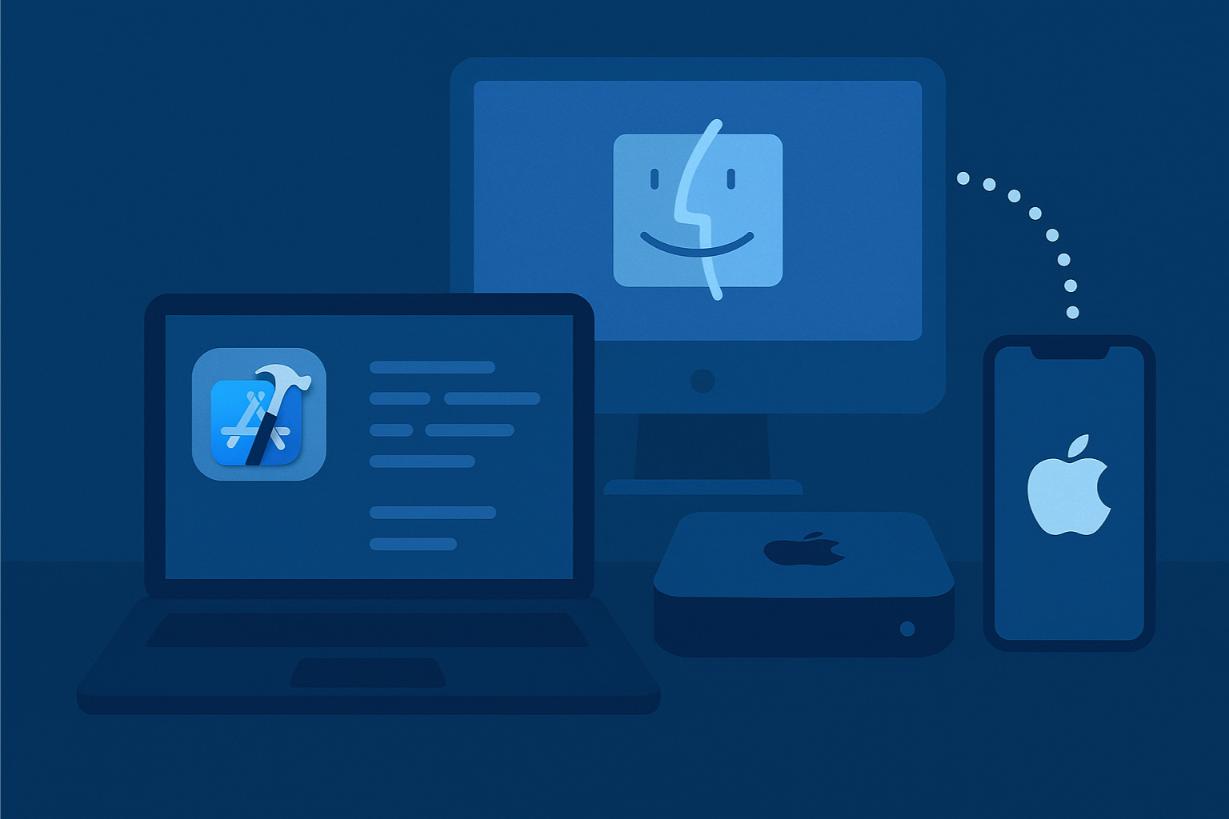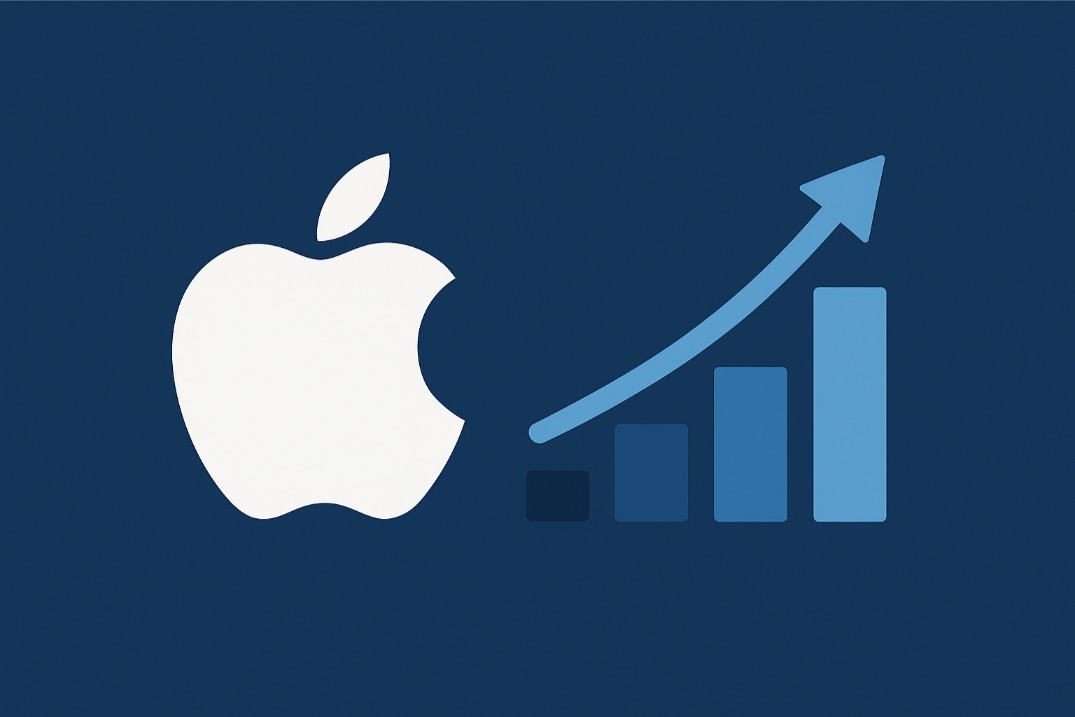iOS apps can only be built using macOS tools. That’s the fact that causes inconveniences for development teams, QA engineers, and companies that don’t have a substantial number of Mac devices.
Luckily, there are several workarounds to develop an iOS app on Windows, Linux, or another OS.
The key ways to develop iOS apps without a Mac are as follows:
- Getting cloud access from Mac rental services
- Building an app on a virtual machine
- Using cross-platform development tools
- Creating an app with an app builder
Let’s discuss them closely!
Why is a Mac needed for iOS development?
With most modern tools, there are multiple ways to develop iOS apps without a Mac, although having one is still recommended.
Here are several reasons why a Mac is recommended for iOS development:
- Flawless ecosystem integration
- Xcode runs more efficiently on macOS
- Hustle-free iOS simulation
- Mac makes publishing apps to the App Store easier.
Let’s have a closer look at these factors.
Flawless ecosystem integration
Apple has created a unique ecosystem of devices that share some Apple-specific features.
To see how your app performs across devices, you need a Mac.
Xcode runs more efficiently on macOS
Xcode is the only official tool for iOS app development.
It is only available on macOS. There are several alternative ways to run Xcode, but they are not as good.
Hustle-free iOS simulation
App testing requires iOS environments; you will need a real Apple device or a simulator.
Although several iOS simulators are available online, you can expect good quality only when running a simulator on a Mac.
However, there are also legal methods to simulate iOS on Windows for layout testing or basic debugging.
Mac makes publishing apps to the App Store easier
Mac devices are tailor-made for publishing iOS apps on the App Store.
They simplify the processes of previewing and deploying apps, as well as preparing documentation and other procedures.
So, developing an iOS app on Windows is possible, but you can’t fully utilize the features that are only available on macOS.
It is important to understand that each system is better suited for specific technologies. macOS is tuned for iOS development, while Windows supports Android development better.
How is iOS development different from Android?
iOS development uses tools and programming languages that are different from Android development.
iOS apps are built using the Xcode development tool and Swift or Objective-C programming languages.
Android apps are also built with platform-specific tools like Android Studio. Android developers use the Java programming language.
Xcode allows developers to build apps that fit Apple-specific features, such as image and animation rendering style, performance, etc.
Hardware-specific features also play a role. For example, tapping the top of the screen on an iPhone brings you back to the beginning of the page. You need a macOS environment to include a similar feature in your app and then test it.
You can also build an iOS app on Windows, using some cross-platform development tools, but you won’t be able to tune it for the aforementioned features of i-devices.
In other words, without a Mac, you can build an app that works on iOS, but doesn’t feel like iOS.
Consider this when choosing different ways to develop iOS apps without a Mac.
How do you develop iOS apps without a Mac?
The main workarounds for developing iOS apps without a Mac include renting a Mac online, building an app on a virtual machine, using cross-platform development tools, and creating an app with an app builder.
Here’s what to expect from them:
Getting cloud access from Mac rental services like RentAMac.io
Cloud Mac services rent out Mac access on a time-share basis. You get access to a real Mac from your Windows or Linux PC.
This is a perfect way to develop iOS apps, as it allows building genuine software for Apple devices, including the full range of features.
This is how it works: Using Windows hardware, you get legal access to the real MacOS environment to perform the necessary tasks: install coding tools and write code, test apps on iOS simulators, or publish them to the Apple App Store.
These services usually allow you to perform tasks of different complexity, from testing a single feature to full-cycle cloud app development.
Yet, you have to be aware of the quality of the cloud Mac services.
The first thing to mention is the availability of different pricing plans. With services like RentAMac.io, you can rent the latest Macs for a day, a week, or a month.
This way, you can rent resources for a full-cycle app development.
Another essential consideration is admin rights. Some services give you full admin access to the Macs you rent, while others require you to ask tech support for permission whenever you need to install a new tool.
The number of users working on a Mac simultaneously also matters. The latest Mac Minis are very powerful. They even allow you to debug running apps like games in real-time or train ML models to supply your app with AI features. The latest Mac Minis are even used for complex tasks like running LLMs for AI-powered app features, thanks to their efficient M-series chips and RentAMac’s dedicated setup.
This performance level also allows developers and designers to generate app assets or integrate generative AI features through apps like Stable Diffusion.
Yet, some service providers practice sharing devices with several users simultaneously, which considerably compromises performance. Therefore, we recommend choosing a service that provides dedicated access.
At RentAMac.io we give dedicated Macs, allowing our clients to get the maximum offer value.
Renting a Mac online is considered the best option to develop iOS apps without a Mac, as it gives access to a real Mac with all the specific macOS features.
Building an app on a virtual machine
Another way to develop iOS apps without a Mac is to use a virtual machine on Linux or Windows.
To do so, you need a virtual machine, like VMWare or VirtualBox, and OS X, which you can download from the App Store. This way, you get the macOS environment on your Windows or Linux PC.
Using cross-platform development tools
Cross-platform development allows building apps that work on both iOS and Android. The most popular ones are Flutter and React Native. Alternatively, developers looking to work directly in Swift without a Mac can also explore Swift development from Windows environments using cloud-hosted Macs.
They allow you to create apps that run on different platforms from a single codebase, so you won’t have issues when developing an iOS app on Windows or other OS.
The apps developed in this way are called hybrid apps.
From a bird’s-eye view, hybrid development is a good way to develop an iOS app without a Mac, but it still has tradeoffs. React Native offers a strong base for hybrid iOS development, and some developers opt to configure their React Native workflows on Windows with remote Mac access
A hybrid iOS app works and feels differently from an iOS app.
Hybrid apps are slower than native iOS apps, lack Apple-specific performance and responsiveness, and differ in rendering animations.
You will also still need Xcode for some development and testing tasks. So, even if you build an app with React native, you must return to option one—renting a Mac online.
Creating an app with an app builder
Free online app-building services allow us to build and test simple apps from pre-built templates.
These tools are simple to use and allow one to develop and publish an app quickly, but they are not tuned for complexity.
You will also have features with customizations.
Many companies use these builders to create MVPs or first versions of their products and employ developers to fine-tune and enhance them.
For developing advanced features, you will also need a physical Mac or rent one in the cloud.
Summing up
You don’t necessarily need a physical Mac to develop iOS apps that will work. Still, you will require a macOS environment if you want flawless development cycles, computing power to perform different tasks, and to grant your apps an Apple-specific look and feel.
Renting a cloud Mac is the most viable workaround for developing fast and responsive apps without a physical Mac.
Wishing to start iOS development without a Mac? Rent a Mac to access the latest Mac minis in a few clicks!
Our latest Mac minis provide the necessary environment for building, testing, and deploying iOS apps at a tiny fraction of the cost of a real Mac!









